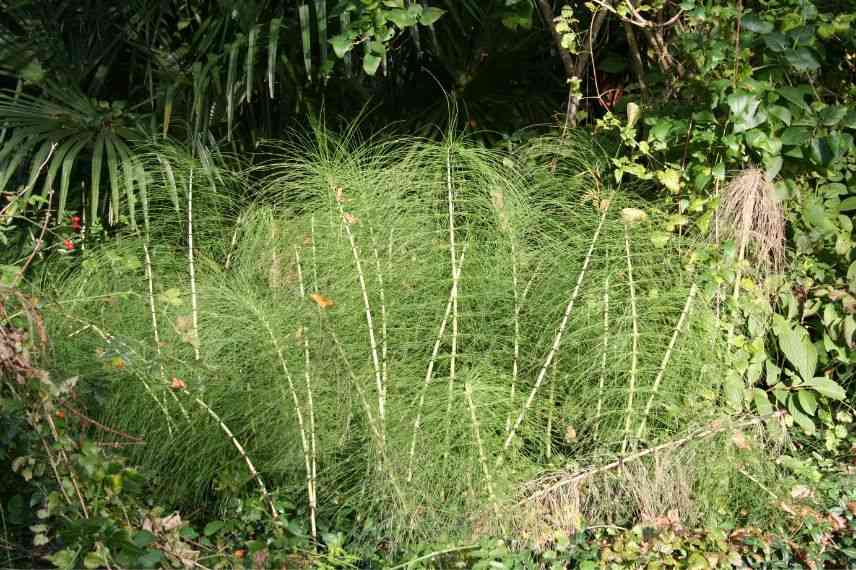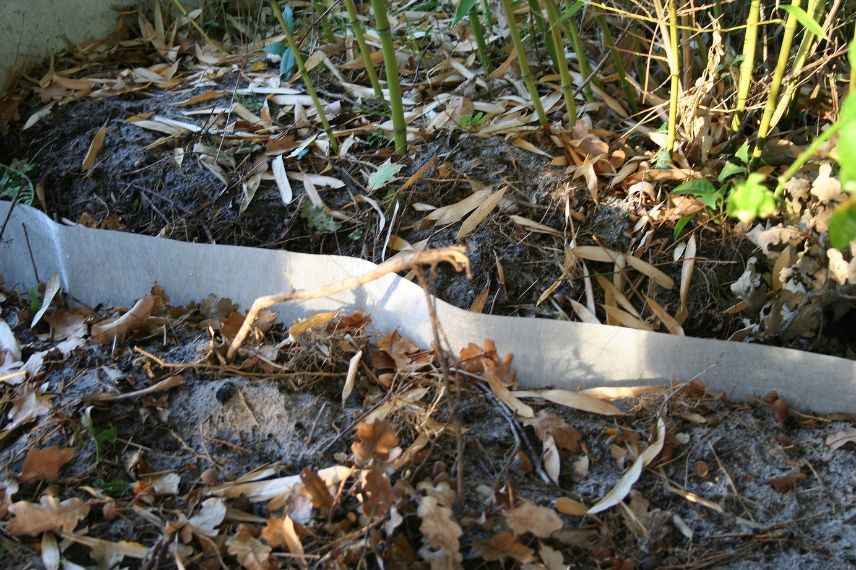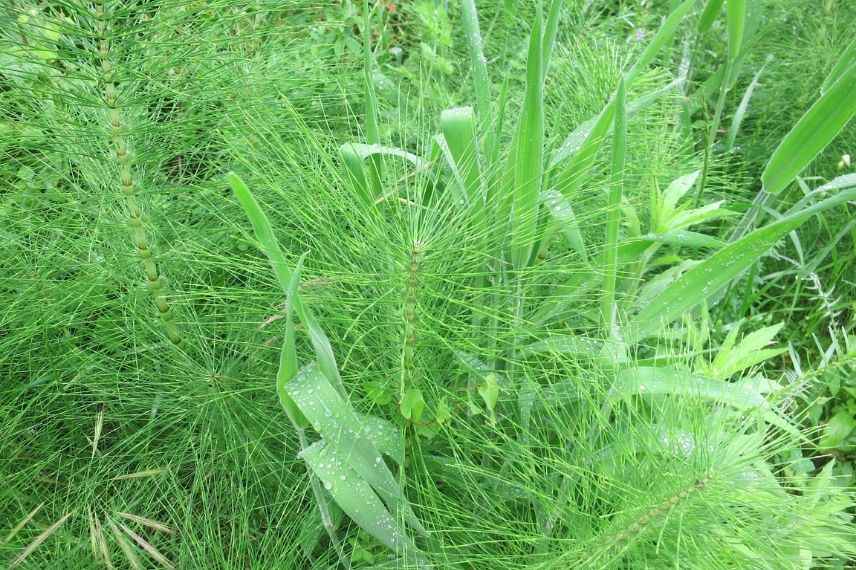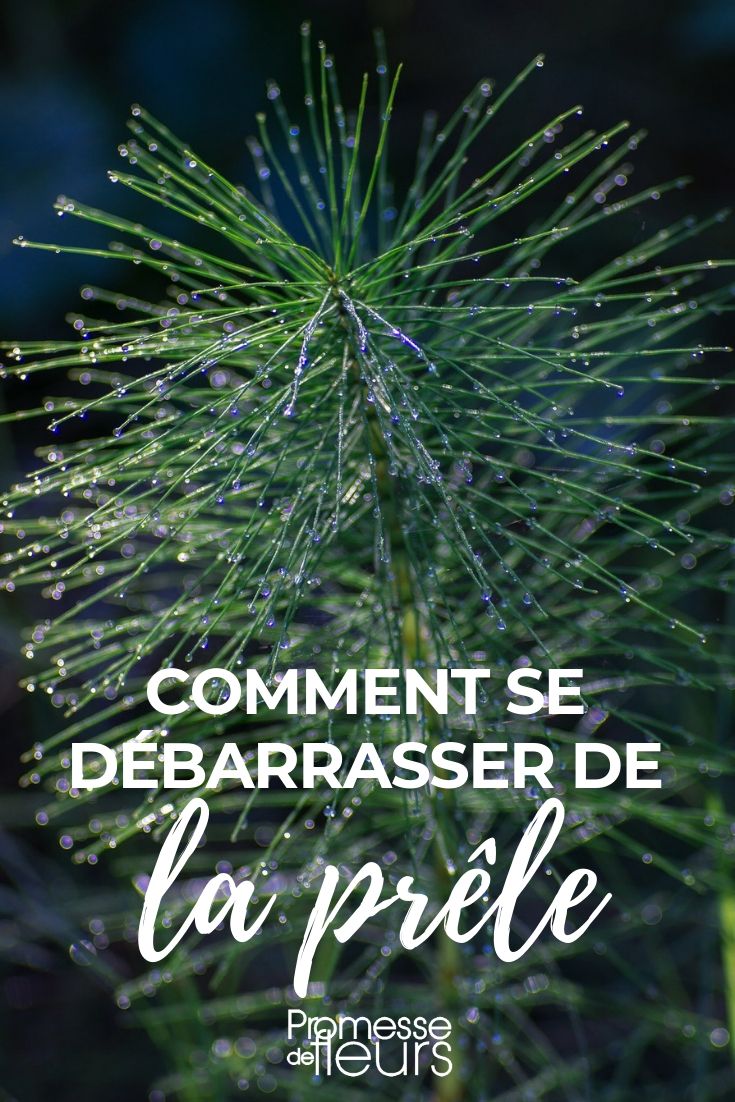
How to get rid of horsetail in the garden?
Natural solutions
Contents
Horsetails are magnificent, fascinating plants. Some are even planted beside or directly within water features for a beautiful ornamental effect. But it must be acknowledged that the field horsetail is a particularly invasive plant, especially when you haven’t invited it into your garden! But why is it in your garden? And above all, how can you get rid of it when it becomes truly troublesome? We explain everything in this advice sheet.
What is horsetail and why does it shoot in my garden?
Horsetails belong to the family Equisetaceae and to the group Pteridophyta, like ferns. They are prehistoric plants. There are many different species, some of which are absolutely magnificent. The name horsetail comes from Latin asper, which means rough. Meanwhile the genus name Equisetum comes from Latin equus, meaning horse, and seta, meaning bristle; horsetails were formerly called “horse-tail”.
Horsetails like wet soils. They are highly resistant to more or less everything (even the toughest weedkillers) and can multiply asexually via underground rootstocks: that is why they sometimes become invasive. One of their characteristics is their ability to store silica in their tissues, which gives them great rigidity and a rough texture.
Horsetail is never there by chance. It is a bio-indicator of your soil quality; its presence probably indicates heavy, compacted, acidic and very wet soil.

→ To find out everything about growing horsetails, read this excellent article by Alexandra.
Read also
Bindweed: how to get rid of it?How to get rid of it effectively?
Here are some methods to get rid of horsetail :
-
Break up compacted soil
You can work with a digging fork. The grelinette (broadfork) is not recommended in this specific case, as you risk bending its tines. Start digging the area with your tool, breaking up each clod. You can then add a little river sand to lighten the soil. This is the most radical method but not the easiest. Using a rotavator is often more effective.
Please note: according to some soil scientists, the term “decompact” is a misnomer; for this type of work it is better to say “to fissure”.
You can also plant species whose roots will help fissure the soil, draw excess water AND not be defeated by a few horsetail shoots: lucerne (alfalfa), rye or dandelions, for example.
-
Reduce the number of sterile shoots
By mowing the area regularly or pulling out young sterile shoots, which are the greenest and roughest (and above all the most invasive). Hoeing or weeding in your vegetable beds and borders will also help reduce the number of sterile shoots. Horsetail will gradually tire out.
-
Add organic matter
Compost, manure, leaf litter, … all these will help improve soil structure and drainage.
-
Raise soil pH
Horsetail likes acidity. By adding lime, you will move a little closer to alkalinity. Soil structure will become more crumbly and less compact, especially in heavy clay soils.
-
Redirect water elsewhere
Find the lowest point of your garden and dig a small pond there. Excess water will flow towards this hole and water will no longer (or will less) stand where horsetail grows, so it will disappear from that area. In addition, it gives you a good excuse to create a lovely natural pond at home.
-
Install a physical barrier
As with bamboo, you can stop the spread of horsetail by encircling it with an anti-rootstock barrier. But this technique is expensive as well as tedious. Use only as a last resort…

The anti-rootstock barrier works equally well for horsetail and for bamboo
-
Deprive it of light!
Horsetail likes sun. Under black plastic sheeting, it will immediately be much less vigorous. Place the sheeting on the soil and secure it by weighing down the edges with large stones. Leave this sheeting in place for at least three weeks. You can also bury horsetail under a mound of soil on which you can create a small growing area. Horsetail will try to re-emerge at the sides of the mound but it will be much suppressed.
please note : If you also find the work tiring, laborious and that it prevents you from watching butterflies fly, here is a little tip to reduce the impact of a horsetail invasion. As we have seen, horsetail is only invasive on wet, compact soils. So you will need to fissure and dry the soil a little… by planting a willow pole. Guaranteed effect: horsetail will no longer grow there once the tree has grown, which happens quickly with willows. Only drawback: you will have a large willow on that spot…
How to use it in the garden or indoors?
I won’t hide it from you, horsetail is a tough plant, hard to eradicate. If you can’t get rid of it, I suggest making the best of a bad situation… because it’s a very useful plant in the garden. It is particularly useful for:
- for plant care: as a decoction or in manure, horsetail has preventive and/or curative effects against many fungal diseases: brown rot, downy mildew, peach leaf curl, rust, powdery mildew, Botrytis, …
- as an anti-slug barrier: slugs hate something that scratches their venter (well, their foot…). A few horsetail stems placed around “slug restaurants” (Hosta, Astrantia, lettuce, …) should slow them down considerably.
- to supply silicon to compost: a few horsetail stems in the compost will contribute silicon. Silicon helps plants become more resistant to pathogenous organisms and drought, and increases tissue rigidity.

Read also
Weeding... the natural way!Did you know?
- Horsetail is so abrasive that it is still used to restore metalware, such as copper pans.
- Horsetail was also used to ‘brush’ teeth in the past. But watch out for gums…
- Horsetail has haemostatic properties, notably in sitz baths for treating haemorrhoids.
- Because of its high silica content, horsetail was also used to treat painful joints, to help bone consolidation after a fracture, and to treat tendinitis…
- Previously, people sought places where horsetail grew, a sign of water close to the surface, to dig a well there.
please note: As you know, plants that colonise soil naturally can improve it. Some loosen compacted soil with their roots, others enrich soil that is too poor by fixing atmospheric nitrogen, others draw off excess moisture, … According to some research, horsetail tends to appear in areas abnormally poor in silicon. Sterile horsetail stems, when dying, would enrich soil with their own silica and thus restore balance for that element.
- Subscribe!
- Contents
































Comments